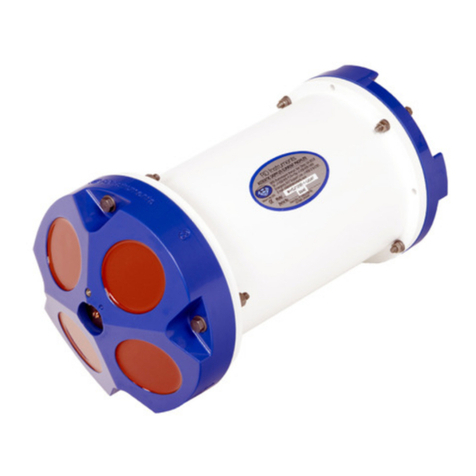
WorkHorse Read This First
page 6 RD Instruments
5 WorkHorse Models and Options
The following section explains the different models and options available
for WorkHorse ADCPs.
WorkHorse Monitor – The WorkHorse Monitor is designed to measure real-
time current profiles from temporary or permanent mounting in the ocean,
near-shore, harbors, and lakes. The Monitor ADCP system consists of an
ADCP, cables, RS-232-to-RS-422 converter, and software. The Monitor
system requires the addition of a Windows® compatible computer to collect
data.
WorkHorse Sentinel – The WorkHorse Sentinel is designed for several-
month autonomous current profile deployment from temporary or perma-
nent mounting in the ocean, near-shore, harbors, and lakes. The Sentinel
ADCP system consists of an ADCP, cables, battery pack, flash memory
card, and software. Both battery capacity and memory can be increased
with upgrades for longer deployments. The Sentinel can also be used for
direct-reading current profile operation. The Sentinel system requires the
addition of a Windows® compatible computer to configure the ADCP and
replay collected data.
WorkHorse Rio Grande – The WorkHorse Rio Grande is designed to meas-
ure real-time current profiles from temporary or permanent mounting in a
vessel. The Rio Grande ADCP system consists of an ADCP with Bottom
Track mode, High Resolution Water Profiling modes, cables, and software.
The input power requirements for the Rio Grande are +12 VDC. The Rio
Grande system requires the addition of a Windows® compatible computer
to collect data.
CAUTION. Do not attempt to attach a Workhorse Monitor/Sentinel I/O
cable or power supply to the Workhorse Rio Grande ADCP. The
Workhorse Monitor and Sentinel ADCPs are 20 to 60 VDC systems. The
Workhorse Rio Grande uses 12 VDC only.
NOTE. The Rio Grande End-Cap is red to differentiate it from the Monitor
and Sentinel ADCPs. Do not swap end-caps between a Rio Grande and a
Monitor/Sentinel. The pin-outs are different on both the I/O cable
connector and the internal I/O cable.
WorkHorse Mariner – The WorkHorse Mariner is designed to measure real-
time current profiles from temporary or permanent mounting in a vessel.
The Mariner ADCP system consists of a Monitor ADCP with Bottom Track
mode, cables, Deck Box, Mounting Plate, and software. The Mariner sys-
tem requires the addition of a Windows® compatible computer to collect
data.





























